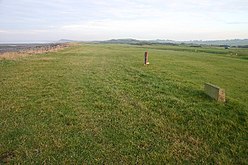| Milefortlet 22 | |
|---|---|
 Milefortlet 22 lies beneath Maryport Golf Course | |
| Type | Milecastle |
| Location | |
| Coordinates | 54°44′10″N3°27′59″W / 54.7360°N 3.4663°W |
| County | Cumbria |
| Country | England |
| Reference | |
| UK-OSNG reference | NY05703890 |
Milefortlet 22 (Brownrigg) was a Milefortlet of the Roman Cumbrian Coast defences. These milefortlets and intervening stone watchtowers extended from the western end of Hadrian's Wall, along the Cumbrian coast and were linked by a wooden palisade. They were contemporary with defensive structures on Hadrian's Wall. There is little to see on the ground, but Milefortlet 22 has been located and excavated.


